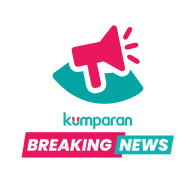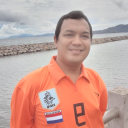Tentang KamiPedoman Media SiberKetentuan & Kebijakan PrivasiPanduan KomunitasPeringkat PenulisCara Menulis di kumparanInformasi Kerja SamaBantuanIklanKarir
2025 © PT Dynamo Media Network
Version 1.103.0
Konten dari Pengguna
Innovation-driven Development (2)
23 Juli 2020 13:15 WIB
Tulisan dari Yopi Ilhamsyah tidak mewakili pandangan dari redaksi kumparan
ADVERTISEMENT
The concept of climate insurance is introduced to farmers. The insurance has a low policy and benefits the farmers because they insure the climate instead of their commodities. If the climate information does not conform to the real situation in the field, the farmer can claim the insurance. Therefore, the insurance company requires accurate climate information before disseminating it to the farmers.
ADVERTISEMENT
Thus, innovation is needed to produce precise climate forecasts. Before implementing the climate insurance to farmers, simulation is necessary. This creative idea can be developed up to the start-up stage of how to create the right simulation for farmers who insure their agricultural climate. At the same time, it will also attract insurance companies to invest their insurance products.
The guarantee from climate insurance will better protect farmers because they obtain a claim for the coverage, which is equal to or slightly higher than the initial investment. So, the farmer will not experience any loss. The insurance guarantee will enable farmers to be more courageous to try new technologies and to use a much better quality grain to increase the productivity of their agricultural products.
ADVERTISEMENT
Climate change is a scourge of disasters in Indonesia, the northern part of Indonesia is projected to be wetter, while the southern region will be drier. The El Nino and La Nina will also be more frequent. Therefore, innovation is urgent as an effort to adapt and mitigate this climate threat. In the agricultural field, the wet areas, including when La Nina occurs, will be prone to floods and pest attacks.
Fortunately, we have created flood early warning innovation and climate-based pest control. Furthermore, we have also developed agricultural dryland innovations for the arid regions and during the El Nino.
In contrast to agriculture, El Nino has a positive impact on the marine field. It increases the fisheries productivity because when El Nino occurs the temperature of the sea surface is cold and the fish love to be on the surface, making it easier to catch. In the south coast of Java, April to September is the upwelling period associated with fish catches, and simultaneously it is also the peak of El Nino.
ADVERTISEMENT
Thus, this is the right time to optimize the catches. In the field of capture fisheries, mapping the fishing zones is fundamental. Understanding how atmospheric and oceanic processes contribute to the creation of the upwelling zone is essential, and this can be done affordably through computer simulations. The upwelling zone has abundant nutrients feeding small pelagic fish which in turn attracts large pelagic fish to hunt the small ones.
The upwelling zone is often associated with fishing location. The innovation to be developed is the implementation of operational oceanography by tracking the location of the catches through real-time oceanic and atmospheric data available either from satellites or modelling and is designed in an application. As for capture fisheries, the temperature of the sea surface will be warmer, causing fish to dive deeper. Therefore, innovation related to fishing gears to capture fish in deeper waters is necessary.
ADVERTISEMENT
Besides, the dry season, accompanied by El Nino, is the right time to plant mangroves because they need high salinity to grow. It is also the best time for salt production and shrimp farming because of the decent water quality in the ponds during this period as there is limited rainwater input.
The sea condition should be maintained to produce high salinity salts meeting the industry standards. It should not be contaminated by waste and sedimentation compromising the salt quality.
The innovations to be developed related to these issues are the determination of mangrove planting schedule, salt and shrimp harvest based on climate prediction and marine environmental services concerning monitoring the distribution of sediment and waste. Innovations related to salt making utilizing solar energy can also be developed.
ADVERTISEMENT
In the field of mainland fisheries, innovation can be the profit and loss analysis related to the area of the ponds by created the fish capacity, food and behavior.
The demographic dividend of Indonesia, the growth of young people who are highly interested in accessing education and technology, enables these. The thinking leading to the creative development inspiring innovation needs to be supported and facilitated. In the university, these young scholars are guided by expert academics to produce fresh graduates with start-ups, contributing to the development of Indonesia.
What about those who are unable to continue their education but are creative? The government provides various programs, such as Bidikmisi, affirmation program, and scouting the interests and talents at the university. They are the forerunners of excellent human resources that must still be monitored and facilitated to realize a more developed Indonesia in the future.
ADVERTISEMENT

